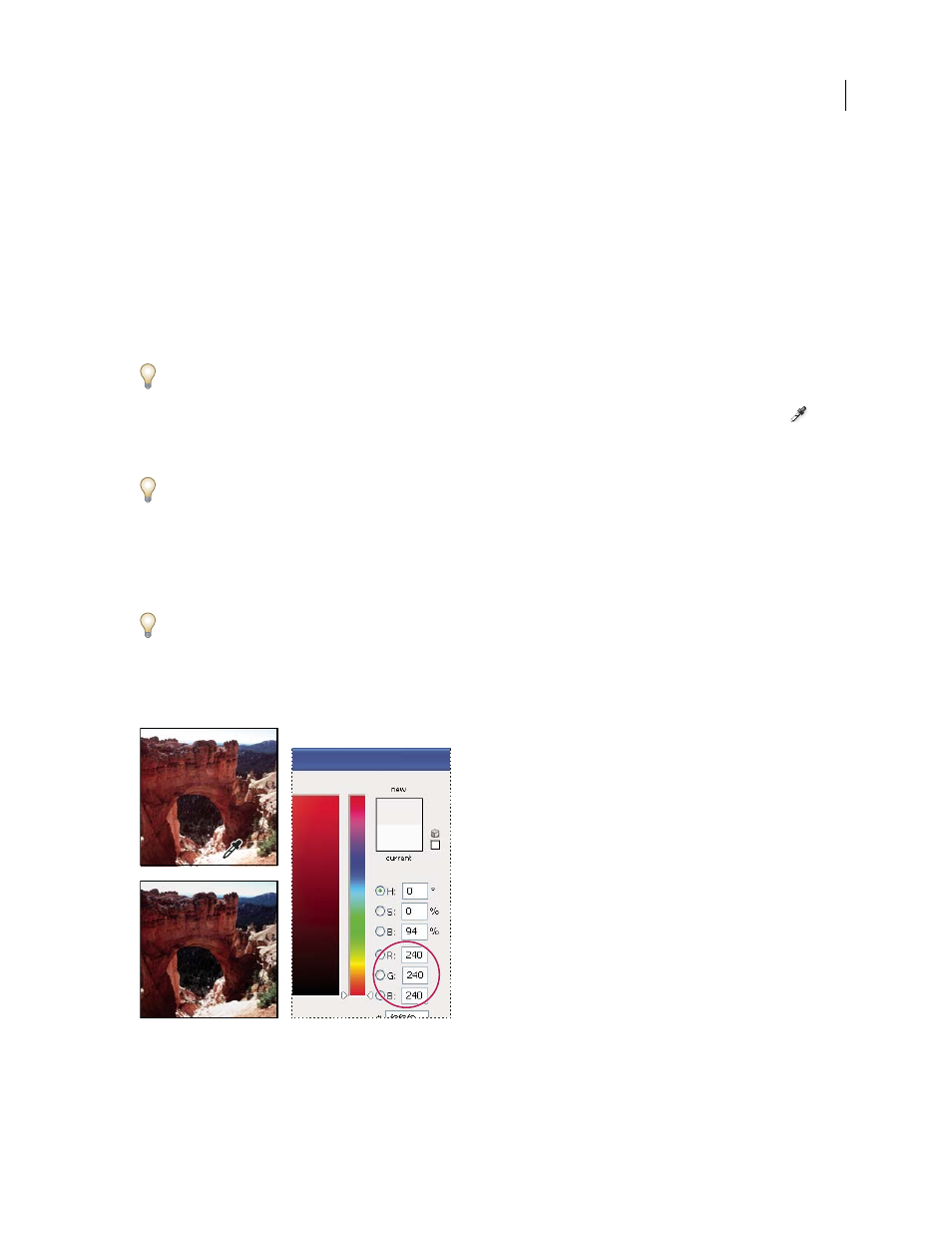Adobe Photoshop CS3 User Manual
Page 182

PHOTOSHOP CS3
User Guide
175
3
Do one of the following to identify areas of highlights and shadows that you want to preserve in the image:
•
Move the pointer around the image, and look at the Info palette to find the lightest and darkest areas that you want
preserved (not clipped to pure black or white). (See “View color values in an image” on page 155.)
•
Drag the pointer in the image, and look at the Curves dialog box to find the lightest and darkest points you want
to preserve. This method does not work if the Curves dialog box is set to the CMYK composite channel.
When identifying the lightest highlight details that you want targeted to a printable (lower) value, don’t include
specular highlights. Specular highlights such as the highlight glint in jewelry or a spot of glare are meant to be the
brightest points in an image. It’s usually desirable to clip specular highlight pixels (pure white, no detail) so that no
ink is printed on the paper.
You can also use the Threshold command to identify representative highlights and shadows before opening Levels or
Curves. (See “Create a two-value black and white image” on page 188.)
4
To assign highlight values to the lightest area of the image, double-click the Set White Point Eyedropper tool
in the Levels or Curves dialog box to display the Color Picker. Enter the values you want to assign to the lightest area
in the image, and click OK. Then click the highlight you identified in step 3.
If you accidentally click the wrong highlight, hold down Alt (Windows) or Option (Mac OS), and click Reset in the
Levels or Curves dialog box.
Depending on the output device, you can achieve a good highlight in an average-key image using CMYK values of
5, 3, 3, and 0, respectively, when you are printing on white paper. An approximate RGB equivalent is 244, 244, 244,
and an approximate grayscale equivalent is a 4% dot. You can approximate these target values quickly by entering 96
in the Brightness (B) text box under the HSB area of the Color Picker.
With a low-key image, you may want to set the highlight to a lower value to avoid too much contrast. Experiment
with Brightness values between 96 and 80.
The pixel values are adjusted throughout the image proportionately to the new highlight values. Any pixels lighter
than the area you clicked are clipped (adjusted to level 255, pure white). The Info palette shows the values both before
and after the color adjustment.
Setting the target value for the Set White Point Eyedropper tool and then clicking a highlight to assign it the target value
